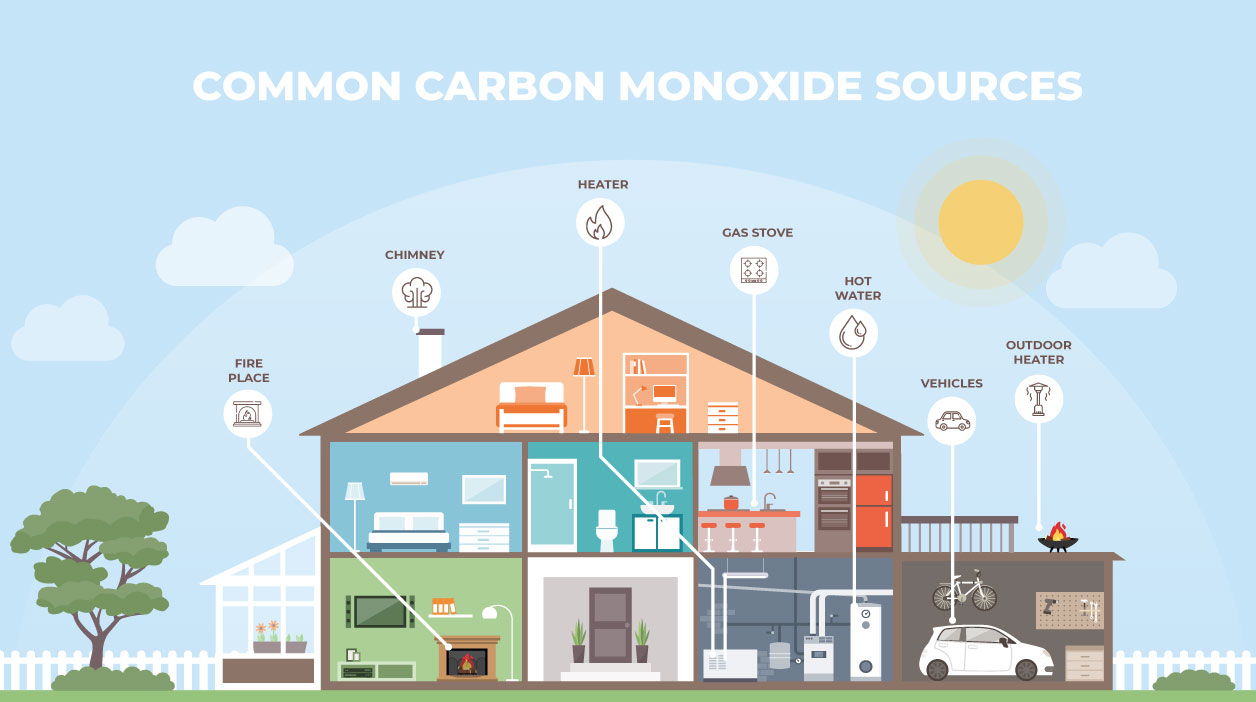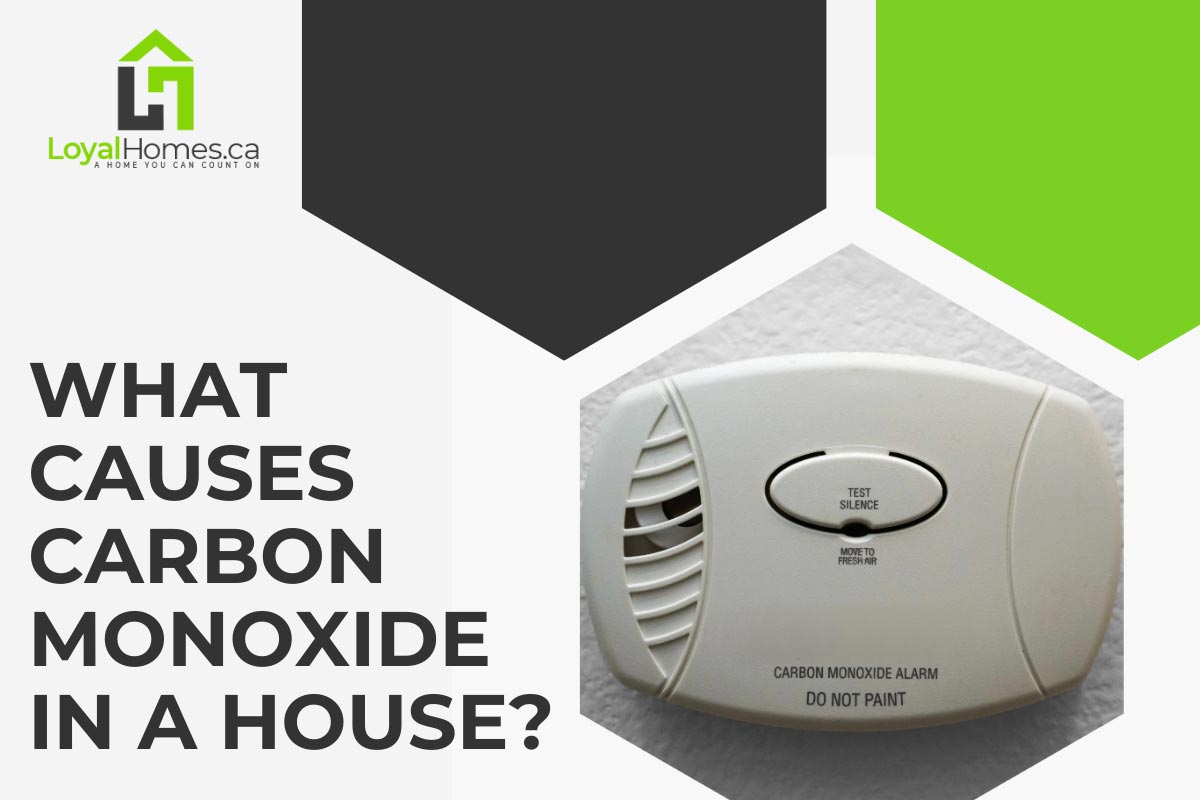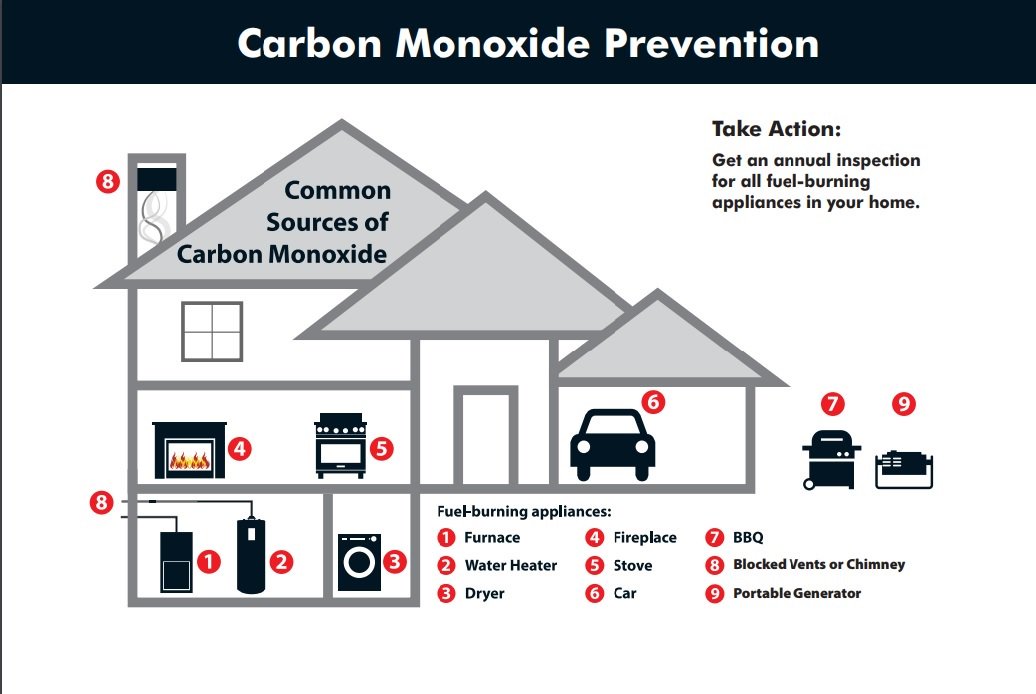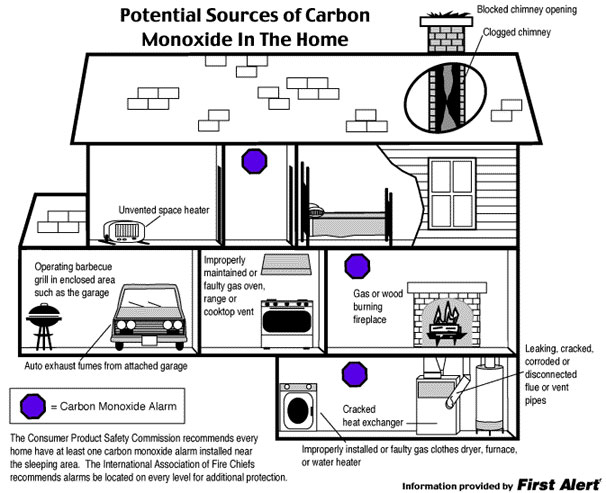What Causes Carbon Monoxide In The House
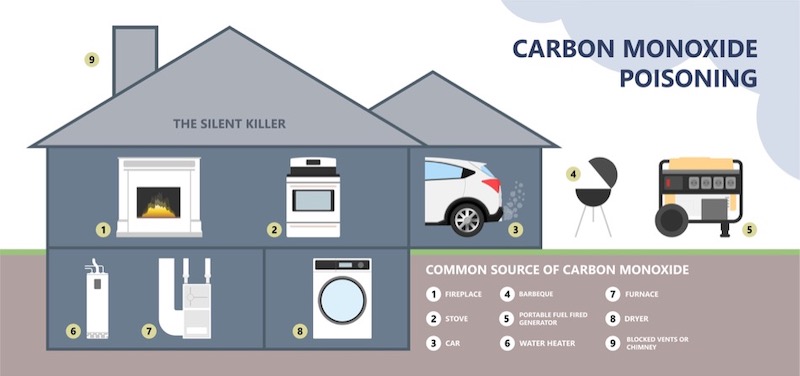
Carbon monoxide (CO) is an invisible, odorless, and tasteless gas that can be deadly. Understanding what causes it in your home is crucial for protecting your health and the health of your loved ones. This guide provides a comprehensive overview of the sources of CO and how to prevent its buildup indoors.
What is Carbon Monoxide and Why is it Dangerous?
Carbon monoxide is produced when fuels like natural gas, propane, wood, oil, and kerosene don't burn completely. Think of it like this: complete combustion produces carbon dioxide (CO2), which is what we exhale. Incomplete combustion produces carbon monoxide (CO), which is a poison.
CO is dangerous because it prevents your blood from carrying oxygen properly. When you breathe in CO, it replaces oxygen in your red blood cells. This leads to oxygen deprivation in your brain, heart, and other vital organs. Even low levels of CO exposure can cause flu-like symptoms, while high levels can lead to unconsciousness and death.
Common Sources of Carbon Monoxide in the Home
Many household appliances and activities can produce CO if they are not properly maintained or used incorrectly. Here are some of the most common sources:
1. Fuel-Burning Appliances
These are the primary culprits in most CO poisoning cases. Any appliance that burns fuel has the potential to produce CO. Regular inspection and maintenance are essential.
- Furnaces: Gas furnaces, especially older models, can leak CO if the heat exchanger is cracked or the burner is not properly adjusted. Think of the heat exchanger as the "lungs" of your furnace – if they are damaged, the system can’t "breathe" properly, leading to CO buildup.
- Water Heaters: Like furnaces, gas water heaters need proper ventilation to exhaust CO safely. A blocked vent can cause CO to back up into your home.
- Gas Stoves and Ovens: While designed primarily for cooking, gas stoves and ovens can produce CO, especially if burners are not burning with a clear blue flame. A yellow or orange flame indicates incomplete combustion and potential CO production. Remember to always use your range hood when cooking.
- Fireplaces (Wood and Gas): Wood-burning fireplaces produce CO when wood doesn't burn completely. Gas fireplaces can leak CO if the gas line or burner is damaged. Make sure the flue is open when the fireplace is in use. The flue is like a chimney's "valve" – keeping it open allows smoke and CO to escape.
- Portable Heaters: Kerosene and propane heaters can be dangerous if used in enclosed spaces without adequate ventilation. These should only be used as a temporary heat source and with caution.
2. Vehicles
Internal combustion engines produce a significant amount of CO. It's never safe to run a car or truck inside a garage, even with the garage door open. CO can quickly build up to dangerous levels.
- Cars, Trucks, and Motorcycles: Even a brief period of idling in a garage can create a deadly concentration of CO.
- Generators: Gas-powered generators are extremely dangerous and should never be operated indoors or in partially enclosed spaces like garages or carports. Always place generators well away from windows, doors, and vents to prevent CO from entering your home.
3. Blocked Chimneys and Vents
Proper ventilation is essential for removing CO from your home. Blocked chimneys and vents can prevent CO from escaping, leading to a dangerous buildup indoors.
- Bird Nests and Debris: Birds, squirrels, and other animals can build nests in chimneys and vents, blocking the flow of exhaust.
- Collapsed Chimney Liners: Older chimneys may have cracked or collapsed liners, which can restrict airflow and cause CO to back up into your home.
- Snow and Ice: Heavy snow or ice can block vents and chimneys, preventing CO from escaping. This is especially a risk after a winter storm.
4. Improper Appliance Installation and Maintenance
Incorrectly installed or poorly maintained appliances are a major cause of CO poisoning. Always hire qualified professionals for installation and maintenance.
- Incorrect Venting: If appliances are not properly vented to the outside, CO can accumulate indoors.
- Lack of Regular Maintenance: Regular inspections and maintenance can identify potential problems before they become dangerous. Think of appliance maintenance like car maintenance – regular tune-ups prevent breakdowns and ensure optimal performance, including safe operation.
5. Other Less Common Sources
While less common, these sources can also contribute to CO buildup in your home.
- Charcoal Grills: Burning charcoal indoors or in enclosed spaces produces high levels of CO. Never use charcoal grills indoors.
- Propane-Powered Equipment: Forklifts, power washers, and other propane-powered equipment should only be used outdoors or in well-ventilated areas.
- Smoking Indoors: While not a primary source of CO poisoning, smoking indoors does release small amounts of CO into the air.
Preventing Carbon Monoxide Poisoning
The best way to protect yourself and your family from CO poisoning is to take preventative measures.
- Install Carbon Monoxide Detectors: Install CO detectors on every level of your home, especially near bedrooms. Test them regularly (at least once a month) and replace the batteries twice a year or as recommended by the manufacturer. Think of CO detectors as your home's "early warning system" for this silent killer.
- Have Fuel-Burning Appliances Inspected Annually: Schedule annual inspections and maintenance for your furnace, water heater, fireplace, and other fuel-burning appliances. A qualified technician can identify potential problems and ensure that your appliances are operating safely.
- Ensure Proper Ventilation: Keep chimneys and vents clear of obstructions. Make sure your appliances are properly vented to the outside.
- Never Run a Car or Generator Indoors: Never run a car or generator inside a garage, even with the door open.
- Use Appliances Safely: Follow the manufacturer's instructions for using all fuel-burning appliances. Never use a gas stove or oven to heat your home.
- Be Aware of Symptoms: Learn the symptoms of CO poisoning, which include headache, dizziness, weakness, nausea, vomiting, chest pain, and confusion. If you suspect CO poisoning, get fresh air immediately and seek medical attention.
- Consider a Smart CO Detector: Smart CO detectors can send alerts to your smartphone if CO is detected, even when you're away from home.
What to Do if Your CO Detector Alarms
If your CO detector alarms, it's important to act quickly and calmly. Follow these steps:
- Evacuate Immediately: Get everyone out of the house and into fresh air.
- Call Emergency Services: From a safe location, call 911 or your local fire department.
- Do Not Re-enter: Do not re-enter the house until emergency responders have determined that it is safe to do so.
- Seek Medical Attention: If anyone is experiencing symptoms of CO poisoning, seek medical attention immediately. Tell the medical professionals that you suspect CO poisoning.
- Identify the Source: Once emergency responders give the all-clear, have a qualified technician inspect your appliances to identify the source of the CO leak. Do not use any fuel-burning appliances until they have been inspected and repaired.
Conclusion
Carbon monoxide poisoning is a serious threat, but it is preventable. By understanding the sources of CO and taking preventative measures, you can protect yourself and your family from this deadly gas. Remember to install and maintain CO detectors, have your appliances inspected regularly, and practice safe appliance usage. By being proactive, you can create a safer home environment.


